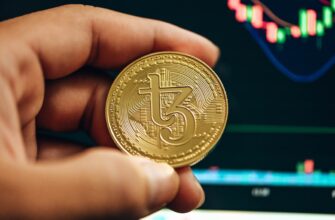- Understanding Cryptocurrency Price Lows
- Why Do Cryptocurrencies Hit Record Lows?
- How to Spot Cryptocurrencies at Their Lowest Price
- The Risks and Rewards of Buying at the Bottom
- Smart Strategies for Investing During Market Dips
- Essential Tools for Tracking Cryptocurrency Lows
- FAQ
- What does “cryptocurrency lowest price” mean?
- Is it safe to buy cryptocurrency when it hits a low?
- How can I find the historical low price of a cryptocurrency?
- What are the signs that a cryptocurrency has bottomed out?
- Can buying at the lowest price guarantee profits?
Understanding Cryptocurrency Price Lows
Cryptocurrency lowest prices represent critical moments in market cycles where digital assets hit their bottom valuation. These troughs often signal fear-driven selloffs but can also create prime buying opportunities for strategic investors. Tracking these lows requires understanding market psychology, technical indicators, and fundamental analysis. This guide explores how to identify, evaluate, and act on cryptocurrency price bottoms while managing risks.
Why Do Cryptocurrencies Hit Record Lows?
Cryptocurrency markets are notoriously volatile, with prices influenced by multiple factors:
- Market Sentiment: Panic selling during negative news (e.g., regulatory crackdowns or exchange failures)
- Macroeconomic Shifts: Rising interest rates or inflation reducing risk appetite
- Technical Triggers: Cascade liquidations in leveraged trading positions
- Project-Specific Issues: Security breaches, failed upgrades, or loss of developer support
- Market Cycles: Natural bear markets following extended bull runs
How to Spot Cryptocurrencies at Their Lowest Price
Identifying genuine lows involves both data analysis and contextual awareness:
- Historical Price Analysis: Compare current prices to all-time highs and 12-month averages using tools like TradingView.
- Trading Volume Spikes: Look for capitulation events with 2-3x average daily volume.
- RSI Divergence: When prices hit new lows but RSI indicators show higher lows, signaling weakening downward momentum.
- On-Chain Metrics: Monitor exchange outflows (suggesting accumulation) and MVRV ratios below 1 (indicating undervaluation).
- Sentiment Gauges: Extreme fear readings on indices like Crypto Fear & Greed Index often precede reversals.
The Risks and Rewards of Buying at the Bottom
Rewards:
- Maximum upside potential during recovery phases
- Lower dollar-cost averaging for long-term holdings
- Opportunity to acquire high-potential assets at discounts
Risks:
- “Catching a falling knife” – prices may drop further
- Project failure risk increases during extended bear markets
- Liquidity crunches preventing timely exits
Smart Strategies for Investing During Market Dips
Mitigate risks while capitalizing on lows:
- Staggered Buying: Allocate funds in 3-5 tranches across weeks/months
- Fundamental Filtering: Only consider projects with active development, clear use cases, and healthy reserves
- Portfolio Caps: Limit any single asset to 5-10% of total crypto allocation
- Stop-Loss Protection: Set automatic sell orders 15-20% below entry points
- Diversification: Spread investments across blue-chips (BTC, ETH) and selective altcoins
Essential Tools for Tracking Cryptocurrency Lows
- Price Alerts: CoinGecko/CoinMarketCap custom notifications
- On-Chain Analytics: Glassnode for holder behavior metrics
- Technical Scanners: TradingView RSI/volume screening
- News Aggregators: CryptoPanic for real-time sentiment shifts
- Portfolio Trackers: Delta or Koinly for performance benchmarking
FAQ
What does “cryptocurrency lowest price” mean?
It refers to the lowest trading price an asset reaches within a specific timeframe (e.g., 24-hour, all-time, or cycle low), often indicating maximum market pessimism.
Is it safe to buy cryptocurrency when it hits a low?
While prices may be attractive, safety depends on context. Assess project fundamentals, market conditions, and avoid “dead coins” with no development activity. Never invest emergency funds.
How can I find the historical low price of a cryptocurrency?
Use coin tracking sites like CoinGecko – select any asset, view its price chart, and toggle to “All Time” view to identify absolute lows.
What are the signs that a cryptocurrency has bottomed out?
Key indicators include declining sell volume, stabilization above key support levels, positive funding rate reversals in derivatives, and increasing whale accumulation.
Can buying at the lowest price guarantee profits?
No guarantee exists. Prices can always drop further, or projects may fail. Profitability depends on exit timing, project survival, and broader market recovery.








